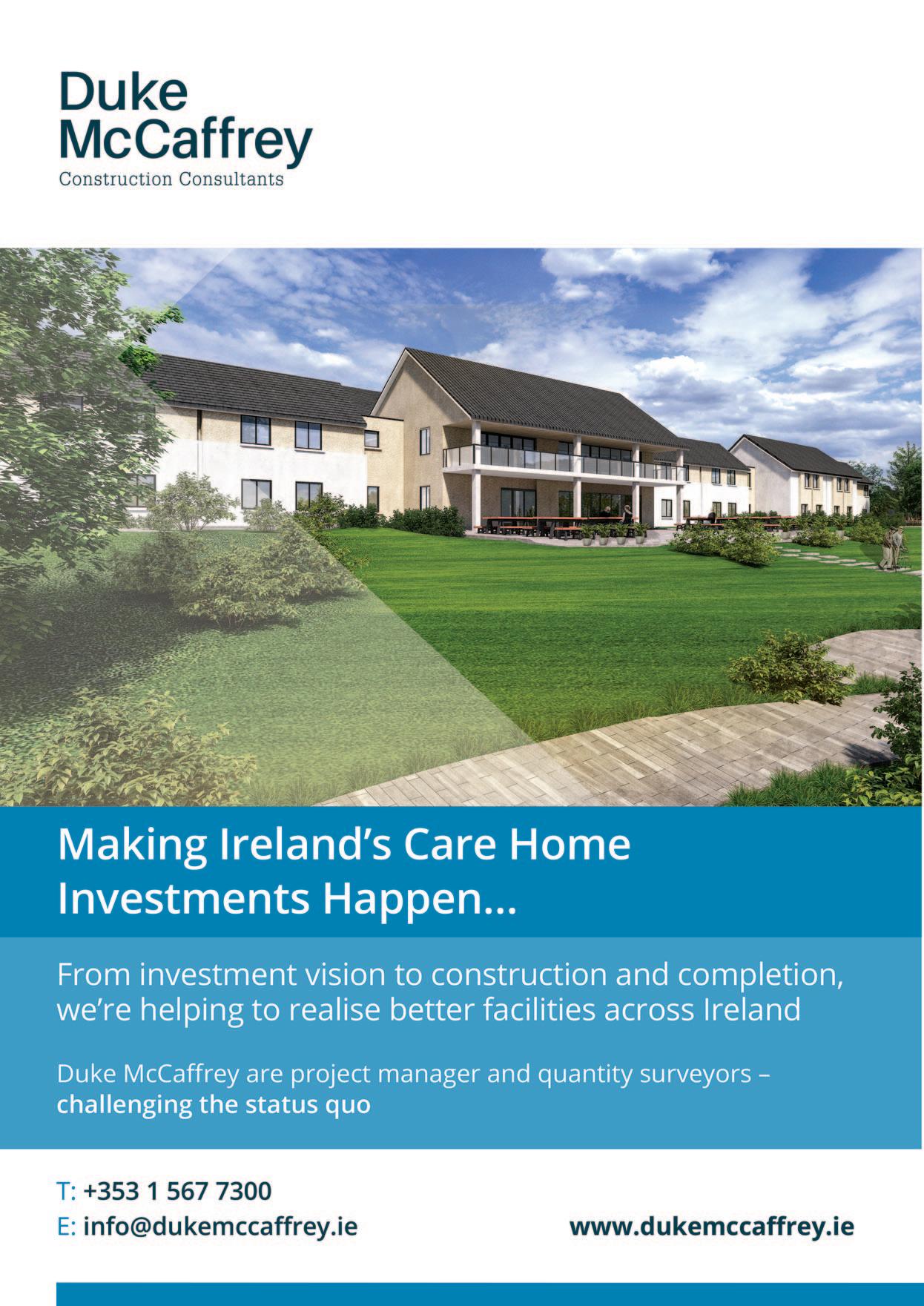
6 minute read
Strategic planningn
from Surveyors journal
by Th!nk Media
STRATEGIC PLANNING
THE STRATEGIC HOUSING DEVELOPMENT PROCESS AIMS TO ACCELERATE HOUSING DELIVERY, BUT CHALLENGES REMAIN, PARTICULARLY AROUND THE NUMBER OF APPLICATIONS ENDING UP IN JUDICIAL REVIEW PROCEEDINGS
Strategic Housing Development (SHD) legislation was introduced in July 2017 under the Planning and Development (Housing) and Residential Tenancies Act 2016 as a means to secure permission for residential schemes of 100+ units. The primary aim of the process was to accelerate housing delivery by reducing processing time. This was to be achieved primarily by requiring applicants to provide comprehensive planning applications following active liaison with relevant planning authorities (PAs). A pre-application gateway (Section 247) process, which takes approximately four weeks, is designed to speed up full engagement with all divisions within the PA to progress applications more efficiently. The objective of this engagement is to give clarity to developers bringing forward projects under SHD where items can be resolved in a semi-formal forum at local authority level. This is followed then by a tripartite consultation (applicant, PA and An Bord Pleanála (ABP)), which is a useful forum for teasing out points of disagreement between departments of the local authority and prospective applicants. Without SHD, the only route for resolving such issues would be following a lengthy planning process and more often an appeal to ABP.
Positives
The meeting of deadlines and the timeline certainty following submission at each stage are certainly positives of this process. The SHD system provides consistency in approach, with definite and improved timelines for decisions, allowing more certainty and multidisciplinary engagement in structured ways. The 16-week timeframe whereby ABP is required to issue a decision or else have a financial penalty imposed has focused decision making. The Section 247 pre-application meetings with the local authority benefit from multidisciplinary interaction from the various departments such as roads, drainage and parks; however, there is often a difference of policy between the PA and ABP, which can be challenging. For example, height and density standards and objectives can often differ in Local Area Plans (LAPs) versus Development Plans (DPs). Standards on unit size, storage,
FEATURE
Lisa Rocca Director of Planning & Development, Oakmount, and SCSI P&D Committee
and private open space can often vary between DPs and Design Standards for New Apartments (DSFNA) (2018). Under the SHD process, there is no provision for requests for additional information or any other correspondence between ABP, the applicant or any third party during the application stage. This is designed to ensure that all substantive issues are resolved prior to lodgement of an application under SHD. In some instances, where an issue arises during the 16-week period, ABP has held single issue oral hearings to resolve these. This is a positive step and allows a decision to be made rather than issuing a refusal and a prospective applicant having to start the entire process again. The use of ‘technical clarifications’ would also allow ABP to seek additional information, strictly where technical uncertainties could be clarified. While the SHD process gives much greater certainty around timelines, there is a substantial amount of work involved during and between each stage.
Challenges
This process can be more costly, as there are often design changes required at each stage, where feedback and requirements between the PA and ABP may not always be consistent and the level of information required is very comprehensive. There is a lengthy time schedule to prepare submissions at each stage of the application process. The degree of required supporting documentation has grown. This is in part due to the forensic thoroughness required to mitigate against possible judicial review (JR) on points of detail. If the application is for 500 units or more, an Environmental Impact Assessment Report (EIAR) is required, which adds to the cost.
Impact of judicial review
The perceived lack of public participation, together with an under-resourced ABP and a very limited mechanism for clarification of technical points, have resulted in a landscape of excessive JRs. Approximately 10% of SHD decisions have faced JR proceedings. Over the past 18 months the number of challenges has increased, which, if successful, will have a significant impact on providing the required number of residential units annually. JR is a significant risk factor facilitating access to courts on administrative issues rather than on the merits of individual schemes. The process in place is already lengthy, and thirdparty observations form part of the final application stage. If a legal versus planning critique prevails, this will do damage to the SHD process and the benefits it has brought to date. Scope for increased legislative review will also threaten the pace of delivery of public sector schemes that are open to the same process. This matter was not helped by the JR where Dublin City Council challenged ABP in court in the interpretation of SHD legislation in the case of an SHD application. There has been a commitment by Government to complete a review of JR since December 2019. Urgent action is now required.
Positive and working
The main principle and objectives of the process are positive and working. The overall mechanism has led to many improvements in applicant/local authority/ABP inspector interaction. The requirement to launch a bespoke project-specific website is informative and offers third parties the opportunity to review the planning application online without having to search local authority online planning portals. ABP’s treatment of SHD applications has had the effect of increasing densities in line with national policy.
Improvements needed
There are a number of areas where changes could improve the overall planning and specifically the SHD process:
n There is an urgent need for a holistic review of standards. On a macro level, the introduction of viability and consistency testing of plans specifically for issues of height and densification at all levels, from
LAPs to county/city development plans (currently under review in 2021) and strategic development zones (SDZs), to ensure an equitable weighting to market requirements, would greatly assist. n Consider using the oral hearing request for
additional information (RFI) route more frequently to deal with technical clarification. n Implementation of a lesson learned approach to SHD tripartite consultations would assist in understanding and learning from best practice, which could be used in any replacement of the SHD process post
December 2021. n Consider the omission of the pre-planning 247 meeting stage and reduce the requirements for tripartite submission and meeting only, where developers can submit their proposal to both the local authority and ABP simultaneously for initial comments, followed by a tripartite meeting. n The process for amending SHD applications (Section 146B) is not fit for purpose. It is unwieldy and has no statutory time frames.
It was taken from Strategic Infrastructure
Developments (SIDs) and is unsuited to residential developments. Such amendment applications should be dealt with directly by ABP. n In urban areas, the threshold for commercial development should be increased, e.g., schemes of 300+ units should allow for a 50/50 split of residential/commercial, or consider removing the cap on ‘other uses’ limits. n The requirement in build-to-rent schemes where the developer must enter into a covenant with the local authority that the development is held in single ownership for a minimum period (15 years+) post completion should be reviewed, and an opportunity created to split by block/phase as opposed to the blanket covenant.













